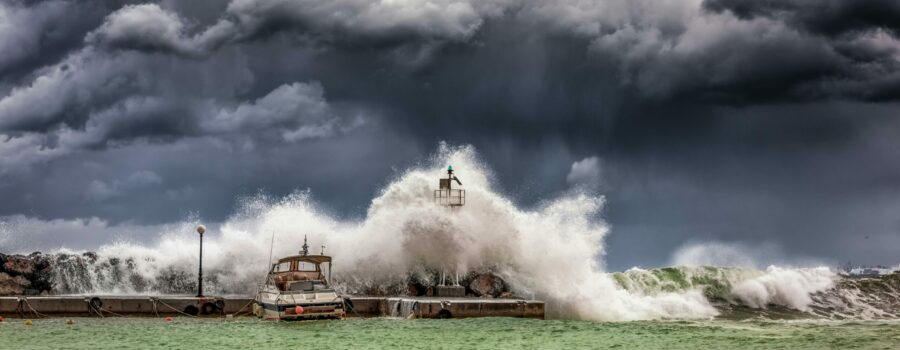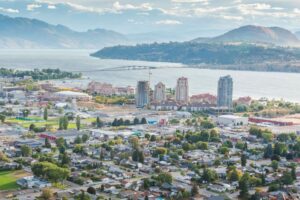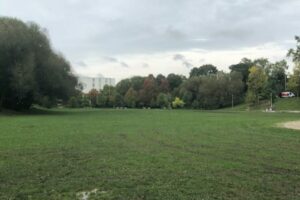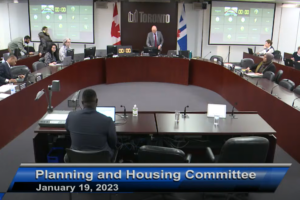Leo Chiang’s 2009 documentary, titled A Village Called Versailles, examines a community in New Orleans East that has been home to Vietnamese immigrants since the mid-1970s. These immigrants were primarily from fishing villages and fled to New Orleans to escape the Vietnam War. They built back their livelihoods for the following thirty years before Hurricane Katrina hit in 2005. The film focuses on the community’s response to the hurricane and resulting issues, including a toxic landfill a few miles upstream from the neighbourhood. The community, which had been quiet and under the radar for the entirety of its existence in the city, rose up and made itself heard despite significant resistance. In doing so, the landfill was closed and the community preserved its future.
The message of this film spoke to the disproportionate effect of natural disasters on marginalized communities, how government response can compound these effects, and the importance of social ties within communities. One of the documentary’s strengths is that it showed how the community followed due political processes in response to its various crises and it was only when these failed that it mobilized outside of and against the government. Sherry Arnstein designed a ladder of citizen participation in 1969 that detailed the levels of political power that citizens can have in urban decision-making. The documentary aligns with Arnstein’s ladder because the community in Versailles was only able to reach the fourth rung, consultation, before it was blocked from continuing and started protesting in order to enact change. This draws attention to the relationship between urban residents and the government officials that preside over them and proves the necessity of community representation in city-making.
Hurricane Katrina highlighted the importance of urban resilience to climate issues, including both preventative measures that lessen the impact of these events and response initiatives to aid recovery. The city’s response was where the disaster’s effects were truly realized for the community in Versailles. From slow rescue times and a lack of translators at crisis centres to environmental gentrification and exclusion from the map, the city disproportionately focused recovery efforts on the western, wealthier parts of the city. The city’s idea to put greenspaces in heavily damaged areas is proof of a refusal to acknowledge the marginalized communities of New Orleans East. This idea echoes concerns that Melissa Checker discussed in her 2011 essay about environmental gentrification in New York: parks were proposed in low-income neighbourhoods and the community was consulted, in accordance with Arnstein’s fourth rung, but lacked the power to make any change. Both communities had insufficient connections to their governments and responded to final plans because their perspectives were not included in the development process.
A Village Called Versailles, on the other hand, did provide an opportunity for these perspectives to be shared. One of the most consistent speakers was Father Ngyuen: the pastor of Versailles’ local church. He was one of the key leaders in the crisis responses and is a testament to the importance of community leaders, even if they are outside of the government. He worked with Trang Tu, a community planner, who was also an important voice because it was her idea to put together a land use proposal to aid Versailles in advocating for itself. It was frustrating to hear that they put all of the work into developing a plan and creating something tangible for the city officials, only to have the mayor dismiss it. This example of consultation proves why Arnstein’s fourth rung is considered tokenism: Nguyen and Tu never had the power to ensure their proposal would be enacted. They had to petition and convince councillors to support their cause because they could not defend themselves.
However, this film shows that there are times when working with government officials is still not enough. At one point, the city council unanimously called on the mayor to withdraw the order for the landfill but he refused. This situation was a reminder that the government is not a singular, unified entity and tensions can arise within it. Since the dynamics between residents and government are consistently highlighted in this film, it would have been beneficial to see the other side of the story: to have heard from government officials and from the mayor if possible. Unsurprisingly, he did not want to be featured in a documentary about a community he tried to poison, but it would have been interesting to hear him speak on his role in this issue. It also would have been beneficial to hear those councillors discuss their decision and provide further insight into the ways that the government operates in times of crisis so that potential avenues for citizen participation could be explored.
Another side to the story that could have been explored further was the wealthy residents. The film focused on the poor conditions in Versailles and New Orleans East, which were in contrast to the uptown parts of the city that recovered quickly in comparison. A consistent reminder that the situation was far easier in other parts of the city would have made the injustice that the residents of Versailles experienced even clearer. This concept is discussed by Daniyal Zuberi in his 2010 chapter on urban inequality. He writes that the wealthy residents were able to leave when the storm hit and returned to file insurance claims on their homes, which were already in the least damaged parts of the city. Meanwhile, the low-income neighbourhoods experienced the most damage and the least amount of government aid. This unequal distribution of government support reflects a lack of representation of marginalized communities and thus an inaccurate picture of the city.
The documentary proved that this representation is vital, especially when it established the history of the community and what was at risk. This connection to their homes was the driving force behind why the residents fought to protect their land instead of moving away. It is clear that these people have never had it easy: they fled a war-torn country and faced racism and scrutiny while rebuilding their lives, only to have it all washed away. What remained was the community ties that had developed, and these ties kept Versailles together. These social ties reflect Robert J. Sampson’s (1999) concepts of social capital and collective efficacy: the social network that the community shared gave the people reasons and resources to work towards a common good. When the government stopped listening to them democratically, they banded together and protested for their social and environmental health. This would have been far less successful without the community network in place.
A Village Called Versailles is evidence of the power of incredible hope amidst incredible adversity. The film’s closing notes stated that the first Vietnamese-American congressman was elected in 2008 and was from Versailles (Chiang, 2009). The fact that this was one of only three statements in the closing shot of the film speaks to the importance of representation in government. When the community was not represented in the city’s government, it petitioned and deputed and followed the proper procedures in response to threats to its health. However, this consultation was not enough so the community changed tactics and made itself impossible to ignore: this finally made the government relent. Relationships between governments and residents are deeply layered and complicated, but they can be eased if the government is made up of residents who reflect the city. This is an important step towards urban spaces where every resident can exercise their right to the city.





